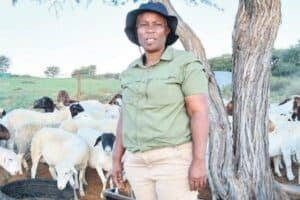Reflecting on Marx and Lenin's definitions, South Africa grapples with persistent poverty and inequality despite progressive laws.

Revered 19th-century German revolutionary thinker, economist and political theorist Karl Marx defined workers or the proletariat as people who neither own nor control the means of production: land, factories and resources.
To survive, they sell their labour and are exploited by the capitalist class, which makes vast profits from their toiling.
ALSO READ: Cyril’s ‘future’ excludes workers
Building on Marx’s theory, Russian philosopher Vladimir Lenin made no distinction between shop-floor workers earning wages and salaried employees – lumping together industrial, agricultural and intellectual employees like teachers, nurses, journalists, engineers and scientists.
As we marked Workers’ Day on 1 May, 30 years into democracy which has ushered in progressive laws like the Labour Relations Act, black economic empowerment and other transformative policies aimed at redressing past apartheid imbalances, poverty has remained.
The poverty gap between the rich and poor in South Africa is frightening and the country is one of the most unequal in the world.
According to South African Reserve Bank 2022 figures:
• The top 10% of the population hold about 58% of the total income; and
• The bottom 50% hold about 12% of the total income.
Further compounding this is the poverty headcount ratio – the percentage of the population living below the poverty line, which is estimated at 30.8%.
These people survive on R561 per month. An estimated 43.2% of the population live below the upper poverty line of R1 268 per month. Independent political analyst Sandile Swana could not have put it better.
“The wage gap between a CEO and an ordinary worker can be as much as 180 times. This means a worker can earn R1 and the CEO can earn R180.”
While efforts to address poverty and inequality in South Africa have included social grants, progressive taxation and policies aimed at promoting economic transformation and inclusive growth, it has not been effective.
ALSO READ: Tripartite Alliance: Cosatu accused of betraying workers
But SA Federation of Trade Unions (Saftu) general secretary Zwelinzima Vavi has come to grips with the core of the crisis. Saftu has identified the “inability to deliver a better life for all” as due to the structure and character of our economy.
“It lies in the two decades of rapid deindustrialisation of SA between 1990 and 2010 as concentrated capital responded to greater pressure from the working class.
“Newly freed from apartheid, yet facing economic liberalisation and pressured by cheaper products internationally, capitalists shut down half the manufacturing capacity in especially labour-intensive clothing, textiles, footwear, appliances and electronics.
“Deindustrialisation and the decline in manufacturing are best illustrated by the declining share of jobs. Manufacturing as a value of gross domestic product is down from over 24% in 1980 to 12.04% in 2022.
“Levels of investments in manufacturing are – more than a decade later – still below the levels of investments at the time of the 2008-2009 global financial crisis.
“This commitment to the productive sector is even lower than other investments across the economy. The low investment rate goes hand-inhand with the character of SA’s three-quarter neocolonial economy.”
We still need to see more commitment from business in investing in SA’s industrialisation, coupled with an undertaking to offer shares to blue-collar workers. Economic growth is not the sole domain of government.






